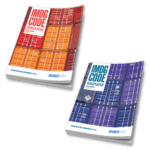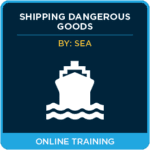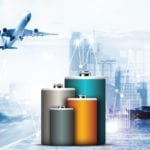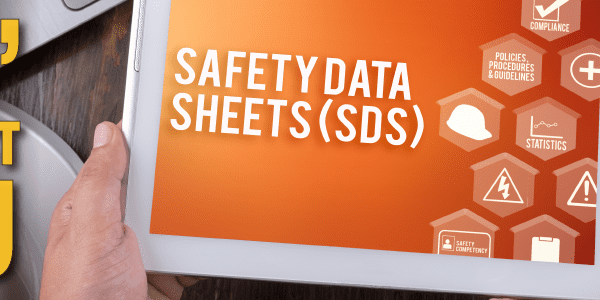How Do The U.S. Hazardous Materials Regulations Protect The Environment?
A question I’m often asked is “Why are the environmental classification rules in the American hazmat system so strangely put together?” It certainly doesn’t give the impression of a seamlessly-designed system – rather, U.S. rules appear more like a conglomeration of different concepts. This makes imports and exports of products with environmental risks a bit tricky, and even domestically it can take a while to figure out things like how a hazardous material is different from a hazardous substance, or when a marine pollutant is not a marine pollutant for transport.
It may seem strange, but up until the 1960s, few regulations in the United States (or other countries), provided much protection to the environment. Even though Americans treasured the unsullied outdoors, most regulators assumed that the wilds of the continent were so vast that there would always be enough to cushion any local contamination. So, for the first part of the twentieth century, most chemical regulations had to deal with workplace and consumer safety. Transportation regulations, as they developed, were mostly concerned with protecting human life from immediate hazards such as fires and explosions, as well as protecting property from financial damage.
But in the 1960s, the environment became a major issue. The Minimata disaster in Japan became a worldwide signal of the dangers of dumping waste chemicals into the environment, and Dr. Rachel Carson’s burning indictment of the indiscriminate use of pesticides, Silent Spring, alerted readers to the risk the dangerous use of chemicals pose not only to nature but our very existence. Eventually, this led to the U.S. Department of Transportation (DOT) adding protection of the environment as a third goal of the “Hazardous Materials Regulations” in Title 49 of the Code of Federal Regulations (49 CFR). But because it wasn’t planned from the beginning, the U.S. regulations are a bit of a mashup of different concepts from different sources.
Hazardous Substances and Reportable Quantities
The concept of “hazardous substances,” as distinct from “hazardous materials,” in 49 CFR did not actually originate with the DOT. In 1980, the Comprehensive Environmental Response, Compensation and Liability Act, commonly known as CERCLA, was passed into law under the Environmental Protection Agency. This law, originally targeted at cleaning up hazardous waste sites, established a reporting requirement for several hundred chemicals considered to be dangerous to the environment. These chemicals were defined in CERCLA as “hazardous substances” – unfortunately, the chosen name did lead to confusion for people already dealing with hazardous materials under DOT.
In the CERCLA ruling, there was a mandate put on the DOT to incorporate the concept of hazardous substances into the “Hazardous Materials Regulations.” Essentially, any package that contained a hazardous substance would be transported as a hazardous material. There was required hazard communication assigned to the classification to tell carriers when they would need to report spills (the “RQ” marking on non-bulk packages and shipping papers.) This would give emergency responders a notification that a spill would have serious environmental consequences, as well as ensuring basic information such as the classification and name of the contaminant were available to the responders.
What made the hazardous substance rule problematic was that it was a unique U.S. designation. It was not taken from the UN Recommendations on the Transport of Dangerous Goods, so other countries do not use this classification. This leads to issues with imports and exports, as something regulated in the US under the hazardous substance rule may not be dangerous goods to other countries. Additionally, this rule was originally not developed by transportation experts, and its impacts for transportation were of secondary significance to its EPA authors compared to environmental impact in general.
However, shortly after the introduction of hazardous substances to the hazardous material system, another environmental classification system came into effect – Marine Pollutants.
Marine Pollutants
Marine Pollutants are a concept developed internationally, and, as their name implies, the concept is primarily aimed at spills of chemicals at sea. An international convention called MARPOL 73/78 (indicating it was created in 1973 and revised in 1978) was created to “control and eliminate marine pollution.” It addressed a number of topics, such as garbage control and pollution by sewage, but its “Annex III” dealt with goods in packaged form (this includes larger bulk containers).
Originally, the MARPOL definition of a Marine Pollutant was list-based, and divided chemicals into “regular” and “severe” pollutants. However, it was eventually updated to allow shippers to do their own classification of unlisted products by testing for environmental effects. This has been adopted in the International Maritime Dangerous Goods Code (IMDG) for marine transport.
The United States became an early adopter of the concept in addition to hazardous substances after a horrific accident on the Sacramento River in California on July 14, 1991. A spill of the pesticide metam sodium was released from a ruptured railway tankcar, releasing 19,000 gallons into the river. One report says:
“Within a week, every fish (1.1 million in total) and all other aquatic life in a 45-mile stretch of the Sacramento River was killed. In addition, many residents living along the river became ill with symptoms that included headaches, shortness of breath, and vomiting. The spill considered the worst inland ecological disaster in California history.”
Another description talks of a “stinking, bubbling green glob that moved 45 miles … down the river, killing everything in its path.” Even today, some species have not returned fully to the river.
Why, you may say, didn’t the rules of 49 CFR prevent this accident, or at least help with the response? Well, because at the time metam sodium wasn’t regulated as a hazardous material. Even the new hazardous substance rule wouldn’t have regulated it. But metam sodium was classed as a marine pollutant under the MARPOL rules.
DOT acted swiftly, and a bit over a year later, a final rule was created to incorporate a classification of marine pollutants as hazardous materials. However, just like hazardous substances, the size of the container matters. The DOT ruled that marine pollutants not transported by vessel would only be regulated when shipped in bulk containers (those exceeding 450 Liter capacity each). Smaller containers, it was argued, would be less likely to release enough material to significantly affect the environment – if they did, they would likely already be covered as hazardous substances.
Originally, DOT simply incorporated a list based on the MARPOL 73/78 list, calling it “Appendix B” to section 172.101, the Hazardous Materials Table. However, since the IMDG Code has adopted the test-based criteria system for unlisted chemicals, the Appendix was amended to add:
“If a material is not listed in this appendix and meets the criteria for a marine pollutant as provided in Chapter 2.9 of the IMDG Code, … the material may be transported as a marine pollutant in accordance with the applicable requirements of this subchapter.”
Note that the word “may” implies that this is optional under US requirements. International shippers, of course, appreciate being able to establish one classification that can apply both domestically and for foreign shipments.
Conclusions
So, the answer to “why does the U.S. environmental transport classification system seem so clumsily designed” is that it was developed through time to address many issues – the requirements of the newly-established EPA, the needs of international shippers, and the desire to make sure that chemicals capable of causing environmental disasters were captured by some part of the evolving 49 CFR. While it can complicate the lives of shippers and carriers, it does mean that Americans are protected from the worst of the horrific environmental catastrophes that plagued the first half of the twentieth century and before.
Contact Us
Do you have any questions about environmentally hazardous chemicals and how to transport or manage them? Our team of experts is just a call away for our customers at 855.734.5469 or send us an email, we’re happy to help.
Do you have any questions about shipping dangerous goods by sea? Contact our team of Regulatory Experts today!
Stay up to date and sign up for our newsletter!
We have all the products, services, and training you need to ensure your staff is properly trained and informed.

|
 Shipping Dangerous Goods Shipping Dangerous Goodsby Sea (IMDG Code) |
 Marine Pollutant Label Marine Pollutant Label |
References:
Wikipedia, “Silent Spring,” https://en.wikipedia.org/wiki/Silent_Spring
Wikipedia, “Minimata Disease,” https://en.wikipedia.org/wiki/Minamata_disease
Wikipedia, “Marpol 73/78,” https://en.wikipedia.org/wiki/MARPOL_73/78
Wikipedia, “Metam sodium,” https://en.wikipedia.org/wiki/Metam_sodium
California Department of Fish and Wildlife, “Final Report on the Recovery of the Upper Sacramento River,” https://nrm.dfg.ca.gov/FileHandler.ashx?DocumentID=17248&inline=true
EPA, “Superfund: CERCLA Overview,” https://www.epa.gov/superfund/superfund-cercla-overview
Federal Register, Docket HM-145E Final Rule, https://www.phmsa.dot.gov/sites/phmsa.dot.gov/files/docs/standards-rulemaking/rulemakings/archived-rulemakings/62961/52-fr-8590-final-rule.pdf
Federal Register, Docket HM-211 Final Rule, https://www.phmsa.dot.gov/sites/phmsa.dot.gov/files/docs/standards-rulemaking/rulemakings/archived-rulemakings/62151/57-fr-52930-final-rule.pdf
UN Recommendations on the Transport of Dangerous Goods – Model Regulations (Rev. 22), https://unece.org/transport/publications/recommendations-transport-dangerous-goods-model-regulations-rev22







 ICC USA
ICC USA ICC Canada
ICC Canada